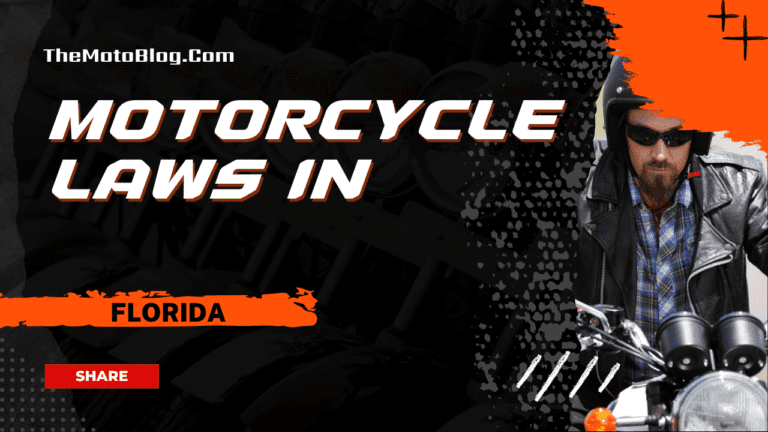Motorcycle Laws in Hawaii: Your Comprehensive Guide to Safe Riding
Hawaii’s motorcycle laws blend safety with the unique challenges of island riding. While California riders navigate busy highways and Alaska bikers battle extreme weather, Hawaii’s regulations address its distinct tropical climate and scenic coastal routes. Whether you’re cruising through Honolulu’s bustling streets or exploring the Big Island’s volcanic landscapes, understanding these laws is crucial for both locals and visitors. Similar to Washington state, Hawaii emphasizes rider safety while preserving the freedom to enjoy its breathtaking scenery.

| Requirement Category | Specific Rules |
|---|---|
| License Type | • Class M License with Type 2 designation • Minimum age: 16 years • Valid driver’s license and ID required |
| Testing Requirements | • Vision screening • Written knowledge test • Rules of road test • Road test/safety course |
| Helmet Laws | • Mandatory for riders under 18 • Must be DOT-approved • Must have chin strap |
| Safety Equipment | • Eye protection required without windscreen • Safety glasses, goggles, or face shield • All equipment must meet DOT specs |
| Basic Equipment | • Permanent seat • Horn • Working brakes • Brake light • Headlight • Taillight • Muffler • At least one mirror |
| Insurance Coverage | • $20,000 per person bodily injury • $40,000 per accident bodily injury • $10,000 property damage |
| Passenger Rules | • No passengers under 7 years old • Proper passenger seating required • Helmets mandatory for passengers under 18 |
| Documentation | • Valid registration • Certificate of title • Safety inspection certificate • Proof of insurance |
| Lane Usage | • Two motorcycles can share single lane • Lane splitting prohibited • Mirror must show 200 feet behind |
| Violation Penalties | • First offense: $500 fine • Subsequent offenses: $1,500+ fine • Possible license suspension • Potential jail time |
Licensing and Basic Requirements
To legally operate a motorcycle in Hawaii, riders must obtain a Class M License with Type 2 designation. The minimum age requirement is 16 years old, aligning with many other states like Washington.
Testing and Documentation
Prospective riders must complete:
- Vision screening
- Written knowledge test
- Rules of road written test
- Road test or state-certified safety course completion
Valid driver’s license and ID card are mandatory for documentation purposes.
Instructional Permits
Hawaii maintains strict regulations for permit holders:
- Three-month waiting period for reapplication after permit expiration
- No passenger carrying allowed
- Night riding prohibited
Safety Equipment Requirements
Helmet Laws
- Mandatory helmet use for riders under 18
- All helmets must be DOT-approved with chin strap
- Similar to Oregon’s approach to motorcycle safety
Protective Gear
- Eye protection required unless motorcycle has windscreen/windshield
- Safety glasses, goggles, or face shield mandatory without windscreen
- All equipment must meet DOT specifications
Operating Regulations
Lane Usage and Equipment
- Two motorcycles permitted side-by-side in single lane
- Lane splitting prohibited
- Minimum one mirror requirement showing 200 feet behind
Required Equipment
- Permanent seat
- Horn
- Working brakes
- Brake light
- Headlight
- Taillight
- Muffler
Insurance Requirements
Mandatory Coverage
Minimum liability coverage requirements:
- $20,000 per person bodily injury
- $40,000 per accident bodily injury
- $10,000 property damage
Optional Coverage
Additional coverage options include:
- Medical payments up to $10,000
- Income disability plan
- Higher liability coverage options
Passenger and Vehicle Regulations
Passenger Requirements
- No passengers under 7 years old
- Proper passenger seating mandatory
- DOT-approved helmet required for passengers under 18
Registration Requirements
Riders must maintain:
- Valid registration
- Certificate of title
- Safety inspection certificate
- Proof of insurance
- Valid driver’s license
Enforcement and Penalties
Insurance violations carry significant penalties:
- First offense: $500 fine
- Subsequent offenses: $1,500 minimum fine
- License suspension
- Potential jail time
Special Provisions
Three-wheeled motorcycles are exempt from helmet requirements if they:
- Use proper restraint system
- Are electric-powered
- Have roll bar/cage or enclosed cab
- Include seat belts
Hawaii’s motorcycle laws reflect a balanced approach to rider safety and freedom. While sharing some similarities with Oregon’s regulations and California’s standards, Hawaii’s unique island environment demands specific considerations. From licensing requirements to safety equipment standards, these regulations ensure riders can safely experience the islands’ natural beauty. Whether you’re a resident or visitor, adhering to these laws helps maintain Hawaii’s reputation as one of America’s premier motorcycling destinations. For those planning to explore neighboring Pacific regions, understanding how these regulations compare to Washington’s motorcycle laws can provide valuable context for safe and legal riding throughout the Pacific region.
Motorcycle Laws in the US By States
If you liked this article, then please subscribe to our YouTube Channel for more Bike Videos. You can also find us on Instagram, Twitter and Facebook.
Disclosure: As an Amazon Associate, I earn from qualifying purchases. Read more about Amazon Affiliate Disclaimer.

Vishwanath Mathpati
I am Vishwanath Mathpati, a full-time Blogger and Motorcyclist from Bidar, Karnataka. I love writing about my Motorcycles Stories and Riding Gears on this blog.
Know More About Me.






